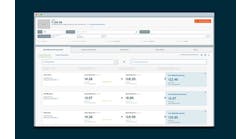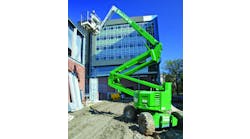With the first quarter of 2008 behind us, rental industry revenue results appear mixed. The most optimistic rental operators are predicting limited growth for the year, likely less than a 5-percent increase compared with 2007 levels. The opinion of the market, however, seems to vary widely. If you are located in California or Florida for example, you're probably just hoping to weather the storm. In other areas, such as Texas, the market appears strong.
Regardless of perspective or location, 2008 looks to be a good time to go back to basic fundamentals of your business. We are fortunate to be in an industry that has seen tremendous growth over the past quarter century. In fact, according to data in a February 2008 article in RER, in only six of the past 26 years (since 1982) has there been growth of less than 5 percent, with only two years of declines (1989 and 2002).
In the past 10 years, a new level of sophistication has evolved within the industry. Large national companies are reporting their results to investors and bondholders. Many have developed sophisticated computer systems that track a multitude of financial and operational measures and are looking to duplicate sources of high profitability and eliminate non-productive sources. Fleet levels by category, by location, time and dollar utilization, profitability, repair expenses, rental rates, payroll expenses, staffing levels, cash flow and other information are programmed into a complex matrix that is analyzed by an army of accountants and managers who develop a new plan of action based on the results.
On the other side of the spectrum, we see many local companies that analyze very little, if any, data. Managers or owners look out in the yard, see what is renting and what is not, look at their receivables and checkbook balance and call it good. They are managing strictly from their “gut.” In an industry with the strong growth dynamics that we have enjoyed in the rental industry, even unsophisticated operators have survived and often even thrived with only minimal analysis. With 2008 looming as being one of those six years of 26 that is down or flat, we strongly urge all rental operators to “manage your capital.”
What is capital? If you look at your balance sheet, capital is what you have left over after you tally your assets and subtract your liabilities. This “capital” represents what you have invested in your business based on past years' performance. If you look at your income statement, the net income left after all revenues are recorded and all expenses are paid is what goes into your capital account based on current operations. In essence, by managing your revenues and expenses you are managing what you are “investing” in your business on an ongoing basis.
Somewhere between creating an army of accountants with reams of computer reports and glancing occasionally at your checkbook and rental yard, here are some of the most fundamental ways to manage your capital in tighter economic times.
Fleet management
Rental fleet is always the single largest investment (use of capital) in a rental company. This is where your time should be spent looking at reports and analyzing available data.
Target a dollar utilization of rental fleet (annual rental revenue divided by original fleet cost). If you rent larger equipment, your target should be at or near 70 percent with general rentals nearing 100 percent. At least weekly, run utilization reports. Target items with low utilization rates (40 percent or less). Do you have too many of them? Are your rental rates on these items either too high or too low? Consider divestiture of these low-margin/low-return items if it is a chronic low-return item with no improvement in sight. Conversely, analyze your high-return items (80 percent or more utilization). Consider investing in more of these items.
Extend the life of your rental assets. Do not make the decision to replace equipment based on age alone. Place older assets on a “watch” list. If they are constantly in the down line or become chronic maintenance problems, go ahead with divestiture and/or replacement. Track your repairs and maintenance expense as a percentage of rental revenue by individual unit. Any rental item with 10 percent or more repairs and maintenance expense as a percentage of annual revenue may be a problem. Other units may continue to be profitable producers for 12 to 24 months beyond normal replacement cycles. In lean years, almost all of the national companies age their fleet to reduce capital expenditures.
Consider buying used or refurbished equipment. Late-model used equipment or refurbished equipment can often be obtained at prices 33-percent to 50-percent lower than buying new equipment. This can reduce your capital expenditures and increase your dollar utilization (essentially increasing your return on invested capital). A late-model reach forklift purchased for $50,000 vs. a new cost of $75,000 routinely brings in the same amount of rental revenue thereby increasing your dollar utilization. If you do buy used equipment (or extend the life of your current fleet) make sure the unit runs well and looks like new — paint, decals and seat covers are good investments on these units.
Supplement your fleet with re-rent equipment, especially on larger ticket items. Often times, additional equipment may be needed for peak revenue demands such as large jobs or seasonal rentals. Sometimes these demands justify permanent investment in fleet and sometimes only a band-aid is needed for a short time period. Often times, on the front-end, it is difficult to determine which category a job or customer falls into. The best scenario is to find a local re-rent source to provide this equipment as needed. Establish a relationship with a local dealer willing to do a rental-purchase option arrangement whereby a portion of your rentals are applied to a pre-determined purchase price or where you have the flexibility to return the unit with no further obligation. Make sure you are making a minimum margin of 20 percent on re-rents and make sure that the equipment condition is documented at the time of delivery and again when it comes off rent.
Treat down equipment and non-rental ready equipment as a “hot potato.” Down and non-rental ready units are non-performing assets. The goal of your shop and mechanical staff should be to return the piece of equipment to profit-generating mode as soon as possible. Walk your down line and check for pieces that have been there for more than a day or two. Visit with your shop manager and your mechanics and find out what causes repair delays and discuss how these delays can be prevented or improved. Make notes on individual pieces of equipment and check the machine history for time and dollar utilization, as well as the repair history.
Monitor your rental rates and minimize discounting. As demand decreases, competition increases. Your goal is to maintain the integrity of your standard rental rates maintaining an overall actual to book rate of 92 percent or better. Set policies on who in your company can discount, how much and under what circumstances. Set realistic minimum rental rates based on an acceptable return on investment and be willing to “walk-away” if these rates are not achieved. Before discounting, look at the customer and the application. How will the machine be used? What are the customer's payment and maintenance habits? What is the potential for future business with the customer?
Balance sheet management
Invest cash in short term or overnight instruments that draw interest. We have seen even small companies routinely have $100,000 to more than $1 million in cash in the bank. Talk with your banker about short-term cash management options.
Stay on top of collections. Your customers are experiencing the same uncertainties as you are. In lean economic times, collection can quickly go from 45 days to 90 days or higher. Call on and frequently follow up with past-due accounts. Watch out for that new customer you just got from your competitor — he may have left there (or been turned away) for reasons other than price or service. Your target is to have no more than 45 days of account sales in your accounts receivable balance — be sure to exclude your cash sales when making this calculation.
Resale inventory. We have said many times that this is a category where we see dollars accumulate that are not working for you. You should have no more than 90 days of sales invested in your resale inventory. Simply put: DO NOT BUY ANY RESALE MERCHANDISE THAT IS NOT GOING TO SELL WITHIN THE NEXT 90 DAYS! The biggest culprit here is often the vendors. Vendors offer special terms or pricing if you “stock up for the season.” We routinely see items still in stock in the fall and winter that were bought the previous spring (or even two springs ago). If you are making a margin of 33 percent on resale merchandise, one item not selling in a reasonable timeframe can wipe out the profit from the last three sales. We recently saw a long-time, multi-location company that had more than $1.8 million (out of $3 million total) in resale parts and merchandise inventory that had no activity for more than a year (on many items several years). This inventory not only wiped out more than a year of gross profit on sales, but also created a significant storage burden.
Accounts payable. Always take the quick-pay discount (usually 2 percent if paid within 10 days) from the vendors that offer it. We know of certain suppliers that offer a 5-percent cash discount. Do you know what your vendors are willing to offer? These discounts offer a better return than any investment instrument of which we know.
Debt. Companies with too much debt usually have not purchased properly or have insufficient cash flow. Companies with too little or no debt have generally missed opportunities to grow their business. In uncertain economic times, we recommend that your debt be no greater than two times your annual EBITDA cash flow (Net Income + Interest Expense + Income Taxes + Depreciation and Amortization). Other rules of thumbs for debt is that your debt service (total note and interest payments) should be no greater than 50 percent of your EBITDA and that your total debt should be no greater than 75 percent of the fair market value of your fixed assets (rental fleet, vehicles, etc.). Bankers call this ratio Loan-to-Value (LTV).
Other considerations
EBITDA (the rental industry standard for cash flow) as a percent of total revenue. If you own or manage a general or construction equipment rental business, your target EBITDA should be 30 percent or greater. We often see well-run companies with EBITDA in excess of 40 percent. If your EBITDA is less than 30 percent, you most likely have cash flow issues.
Payroll as percentage of total revenue. For most rental companies, payroll is the No. 1 cash expense and the No. 1 enemy of profitability! Watch your “fully burdened” payroll, which includes base pay, overtime, vacation pay, sick pay, commissions, bonuses, payroll taxes, employee insurance and any other employee benefit expense. Compare these expenses to revenue every pay period. If you are in construction equipment rental, target payroll expense at 25 percent or less of total revenue. General rental companies (companies renting smaller equipment, with a high mix of daily and weekly business) should target 30 percent or less payroll expense to total revenue. If a rental company has EBITDA of less than 30 percent or has cash flow problems, it almost always relates back to payroll being too high. If your payroll expense is out of line for more than two pay periods, look at taking immediate action.
Some intangibles to consider
Increase your visibility with customers. Consider adding additional sales people. At least one national company has significantly increased its sales presence in Florida during a down market resulting in increased location profitability and increased fleet utilization. Both owners and managers should regularly meet with key customers to reinforce the relationship with your company.
Down markets can create expansion opportunities. We know of one successful company in a major market that significantly expanded during a recession in the 1980s. This company was one of three equal-sized companies in the area, each with several locations doing approximately $10 million in annual revenue. While the competition remained neutral and merely weathered the economic crisis, this company expanded the number of store locations in its primary trade area and also expanded into two new adjacent markets. The result? Ten years later during the economic boom in the 1990s, this company had more than $100 million in annual revenue while its competition languished with minimal growth. If you are financially stable, look for growth opportunities via acquisition or cold start. These investments during a down period can pay significant dividends in the future when good times return.
Managing your capital properly and efficiently in 2008 will put your company in the position to capitalize on the inevitable growth the rental industry has historically experienced after each of these relatively brief down cycles.
Gary Stansberry is a partner in the mergers and acquisitions consulting firm of Hageman, Stansberry & Associates, Arlington, Texas and Cameron Park, Calif. More information on HS&A can be found on its website at www.rentaladvisors.com. Stansberry can be reached at (817) 563-6882 or by e-mail at [email protected].





